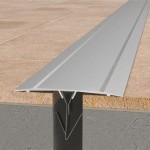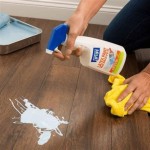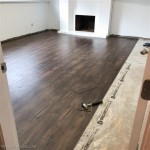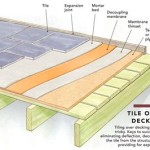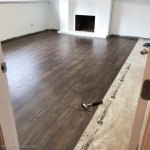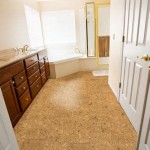How To Repair Laminate Flooring Water Damage
Laminate flooring, prized for its affordability, durability, and ease of installation, is a common choice for homeowners. However, despite its resilient surface, laminate is susceptible to water damage. Unlike solid hardwood, laminate's core is typically made of fiberboard, which readily absorbs moisture, leading to swelling, warping, and ultimately, structural degradation. Addressing water damage promptly and effectively is crucial to preserve the integrity of the flooring and prevent further complications like mold growth.
This article provides a comprehensive guide on identifying, assessing, and repairing water damage in laminate flooring. It outlines the necessary steps to take depending on the severity and extent of the damage, offering practical advice and techniques for both minor repairs and more extensive replacements. Understanding the underlying causes and implementing preventive measures are also discussed to minimize the risk of future water damage incidents.
Identifying the Source and Extent of Water Damage
The first step in repairing water-damaged laminate flooring is to identify the source of the water intrusion. Common culprits include leaking appliances (dishwashers, refrigerators, washing machines), plumbing leaks (under sinks, behind toilets), roof leaks, overflowing tubs or sinks, and inadequate sealing around windows and doors. Tracing the water back to its origin is essential to prevent recurrence after the repair. Ignoring the source will only lead to repeated damage and wasted effort.
Once the source is identified and rectified, assess the extent of the damage. This involves a thorough inspection of the affected area. Look for visible signs such as:
- Swelling and Warping: Laminate planks may appear raised, buckled, or uneven. Feel for soft spots, which indicate the core material has absorbed water and weakened.
- Discoloration: Water damage often leads to discoloration of the laminate surface, usually appearing as dark spots or stains.
- Separation at Seams: The seams between planks may separate or lift, creating gaps and uneven surfaces.
- Mold Growth: In severe cases, mold may develop on the surface or underneath the flooring. The presence of a musty odor is also a tell-tale sign of mold.
Carefully examine the surrounding areas to determine if the damage extends beyond the initially visible area. Use a moisture meter to check the moisture content of the subfloor. A reading above the recommended level indicates that the subfloor is also affected and requires drying.
The severity of the damage will dictate the appropriate course of action. Minor surface damage might be repaired, while extensive warping or mold growth necessitates plank replacement or even complete floor replacement in extreme situations.
Repairing Minor Water Damage: Surface Treatments and Plank Smoothing
Minor water damage, such as small stains or slight swelling, can sometimes be addressed without replacing the planks. This approach is suitable when the core of the laminate has not been significantly compromised.
Surface Stain Removal: For surface stains, start by gently wiping the area with a clean, damp cloth. Avoid excessive water, as it can exacerbate the problem. If the stain persists, try a mild cleaning solution specifically designed for laminate floors. Test the solution in an inconspicuous area first to ensure it doesn't damage the finish. Apply the solution sparingly and wipe dry immediately. For stubborn stains, a specialized laminate stain remover may be necessary.
Addressing Minor Swelling: If the swelling is minimal, placing a heavy object (such as books) on the affected area for several days may help flatten the plank. Protect the surface with a clean cloth or towel to prevent scratches. Heat can also be used to gently dry out the swollen area. Use a hairdryer on a low setting, keeping a safe distance from the flooring. Avoid prolonged exposure to heat, as it can damage the laminate surface.
Sealing Seams: If the seams between planks are slightly separated, apply a laminate seam filler to close the gaps. Choose a filler that matches the color of your flooring. Carefully apply the filler, following the manufacturer's instructions, and wipe away any excess. A clear silicone caulk can also be used for sealing seams, particularly in areas prone to moisture, such as around sinks or entryways.
It is crucial to monitor the repaired area closely for any signs of recurrence. If the swelling or staining returns, it indicates that the underlying damage is more severe and plank replacement is likely necessary.
Replacing Damaged Laminate Planks
When water damage is significant, such as extensive swelling, warping, or mold growth, replacing the affected planks is often the only viable solution. This process requires careful removal of the damaged planks and installation of new ones that match the existing flooring.
Preparation: Gather the necessary tools and materials, including replacement planks, a utility knife, a pry bar, a tapping block, a hammer, adhesive (if required), and safety glasses and gloves. Ensure the replacement planks are the same type, color, and thickness as the existing flooring. If the original flooring is discontinued, try to find a close match or consider replacing a larger area to maintain a uniform appearance.
Removing Damaged Planks: Start by removing the baseboards or trim around the perimeter of the room. This will allow you to access the edges of the flooring. Use a utility knife to score along the edges of the damaged plank(s). This will help prevent splintering and damage to the adjacent planks. Carefully use a pry bar to lift the damaged plank(s). If the planks are glued down, you may need to use a heat gun to soften the adhesive. Work slowly and carefully to avoid damaging the surrounding planks.
Preparing the Subfloor: Once the damaged planks are removed, inspect the subfloor for any signs of moisture or damage. If the subfloor is wet, allow it to dry completely before proceeding. Repair any damaged areas of the subfloor with patching compound or plywood. Ensure the subfloor is clean, level, and free of debris. This will provide a stable base for the new planks.
Installing Replacement Planks: If the laminate flooring is a click-lock system, simply align the new plank with the adjacent planks and click it into place. Use a tapping block and hammer to ensure a tight fit. If the planks are glued down, apply adhesive to the back of the new plank and carefully position it in place. Use a heavy object to weigh down the plank while the adhesive dries. Trim any excess material with a utility knife. Reinstall the baseboards or trim around the perimeter of the room.
Matching Grain and Pattern: When installing replacement planks, pay attention to the grain and pattern of the existing flooring. Try to match the new planks as closely as possible to create a seamless transition. This will help to minimize the visibility of the repair.
Preventive Measures to Minimize Future Water Damage
Preventing water damage is always preferable to repairing it. Implementing proactive measures can significantly reduce the risk of future incidents and prolong the life of your laminate flooring.
Promptly Addressing Leaks: Regularly inspect appliances, plumbing fixtures, and roofing for any signs of leaks. Addressing leaks immediately can prevent water from accumulating and causing damage to the flooring. Pay particular attention to areas around sinks, toilets, dishwashers, and washing machines.
Proper Sealing: Ensure that all seams and edges of the laminate flooring are properly sealed, especially in areas prone to moisture. Use a waterproof sealant around sinks, toilets, and bathtubs. Sealant should also be applied around windows and doors to prevent water from entering during rain or snow.
Using Protective Mats and Rugs: Place protective mats or rugs in high-traffic areas, such as entryways and kitchens, to absorb moisture and prevent spills from reaching the laminate flooring. Use waterproof mats under potted plants to protect the flooring from water damage caused by overwatering.
Maintaining Adequate Ventilation: Ensure proper ventilation in bathrooms and kitchens to reduce humidity levels. Use exhaust fans during showers and cooking to remove excess moisture from the air. High humidity can contribute to water damage and mold growth.
Regular Cleaning and Maintenance: Clean laminate flooring regularly with a damp cloth or mop, avoiding excessive water. Use cleaning products specifically designed for laminate floors. Avoid using abrasive cleaners or scouring pads, as they can damage the finish. Clean up spills immediately to prevent them from soaking into the flooring.
Consider Waterproof Laminate: When installing new laminate flooring, consider using waterproof or water-resistant laminate options. These types of flooring are designed to withstand moisture and are less susceptible to water damage.
By implementing these preventive measures, homeowners can significantly reduce the risk of water damage and maintain the beauty and longevity of their laminate flooring.

How To Prevent Repair Water Damage Laminate Flooring Claude Browns

A Guide To Fix Wet Laminate Floors All Dry Usa

How Do I Camouflage Water Damaged Laminate Flooring Hometalk

Step By Guide On How To Fix A Laminate Floor That Got Wet

How To Repair Laminate Flooring With Water Damage 12 Steps

Repair Or Replace Water Damaged Floors 50 Floor

Tips To Fix Laminate Floor Bubbling

A Guide To Fix Wet Laminate Floors All Dry Usa

Why Am I Being Told That My Waterproof Laminate Flooring Needs To Be Pulled Up After Water Damage Restopros Of Northeast Georgia

How To Replace Warped Water Damaged Laminate Floor Boards
See Also
